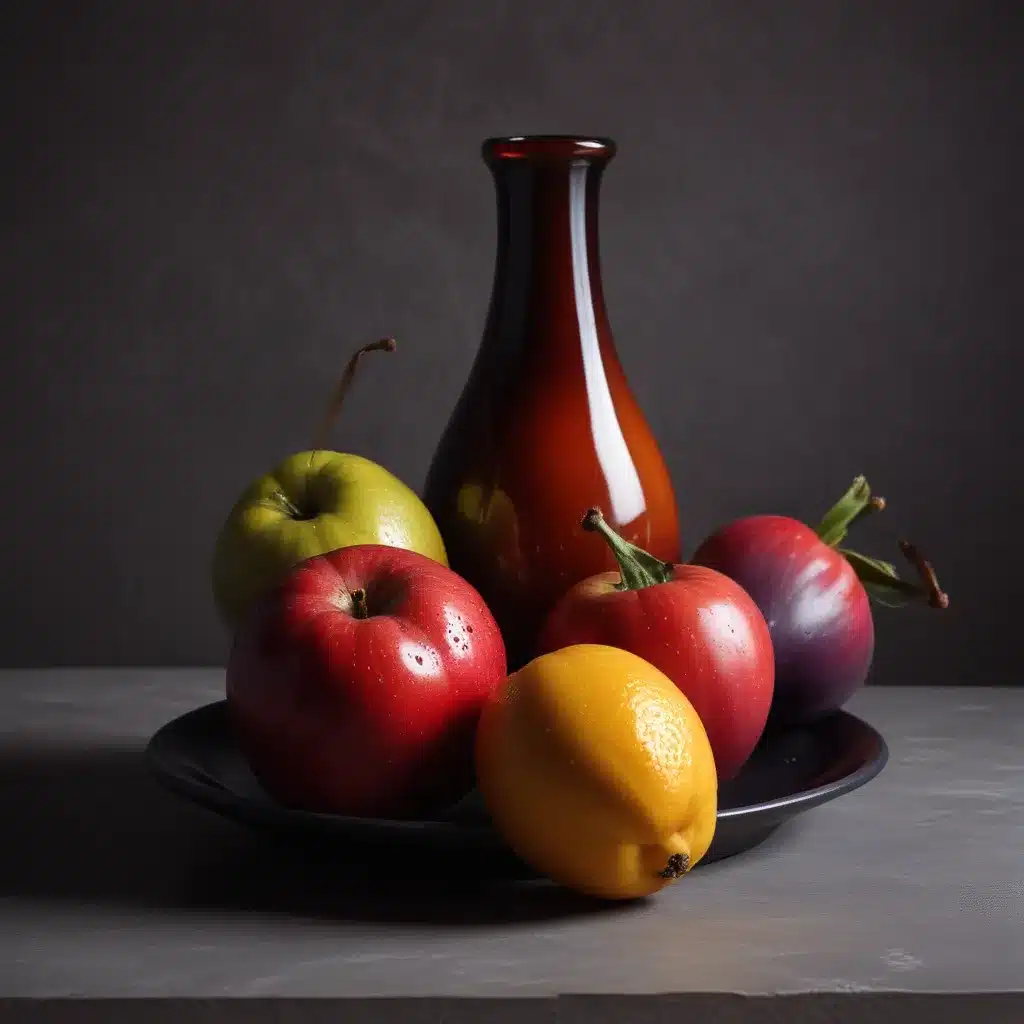
Capturing the captivating interplay of light and shadow, colour and tone, is the essence of a truly arresting still life painting. In our 15 years installing… As an art writer and creative consultant, I’ve had the privilege of diving deep into the techniques that enable artists to elevate the humble arrangement of objects into a masterful work of art. In this comprehensive guide, we’ll explore the power of chromatic chiaroscuro — harmonising vibrant colour with dramatic contrasts — to breathe life into your still life compositions.
Laying the Groundwork: Colour Theory Fundamentals
Before we delve into the specifics of creating our chromatic chiaroscuro, it’s essential to revisit some foundational colour theory principles. Colour, as the Muddy Colors blog eloquently explains, is a three-dimensional beast, comprising hue, value, and chroma.
Hue refers to the pure, unmixed colours we know by name — blues, reds, yellows, and so on. Value is the lightness or darkness of a colour, while chroma is the intensity or saturation of that hue. Mastering the interplay between these three elements is key to unlocking the full expressive potential of your palette.
One of the most powerful tools in the artist’s arsenal is the colour wheel — a visual representation of how hues relate to one another. By understanding the relationships between primary, secondary, and tertiary colours, you can create harmonious, visually striking compositions. Complementary colours, those hues directly opposite each other on the wheel, can be used to create high-contrast, eye-catching effects.
Chiaroscuro: The Power of Light and Shadow
Alongside a command of colour theory, the chiaroscuro technique — the dramatic interplay of light and shadow — is a hallmark of captivating still life painting. As the Artists & Illustrators article notes, working on a grey ground can help establish a strong tonal foundation, allowing you to quickly map out the lightest and darkest areas of your composition.
Carefully observing and capturing the subtle shifts in value as light falls across your subject is crucial. Don’t be afraid to exaggerate these contrasts, using thick, textured brushstrokes to accentuate the play of illumination. Pay special attention to the reflected and shadow tones, as these can help create a sense of depth and three-dimensionality.
Harmonising Colour and Contrast
With a solid grasp of colour theory and chiaroscuro techniques, you’re now ready to harness the power of chromatic chiaroscuro — the harmonious blending of vibrant hues and dramatic lighting effects.
Begin by selecting a complementary palette, using colours opposite each other on the colour wheel to create high-contrast, eye-catching accents. The Artists & Illustrators article offers a great example, with the bright daisies and red turtleheads set against a dark, velvety backdrop.
As you mix your paints, pay close attention to the temperature of your colours. Juxtapose warm and cool tones to add depth and interest to your shadows and highlights. Experiment with layering and glazing techniques to achieve rich, nuanced chromatic blacks and deep, saturated hues.
Remember, the key to successful chromatic chiaroscuro is balance. Don’t be afraid to let some areas of your composition be relatively low in chroma, allowing the high-intensity accents to truly shine. Carefully consider the overall mood and atmosphere you want to convey, and let your colour choices and lighting effects work in harmony to bring that vision to life.
Practical Painting Techniques
Now that we’ve laid the theoretical groundwork, let’s dive into some practical painting techniques to help you achieve captivating chromatic chiaroscuro in your still life compositions.
Sketching and Drawing Fundamentals
Begin by quickly sketching out your still life arrangement, focusing on the proportions and perspective of the objects. Use pencil shading techniques to map out the initial areas of light and shadow, establishing a strong tonal foundation before you start painting.
Laying the Groundwork
As mentioned earlier, working on a grey-toned ground can be incredibly helpful, as it allows you to quickly establish the overall tone and value relationships in your composition. Use thin, directional brushstrokes to block in the major shapes and shadow patterns, keeping your paint application loose and expressive.
Colour Mixing and Application
When it comes to mixing your colours, the Facebook group discussion highlights the value of creating your own custom colour wheel. By carefully blending and testing your pigments, you’ll develop a deeper understanding of how hues interact and can be used to achieve specific effects.
As you start applying paint to the canvas, remember the “thin-to-thick” rule. Begin with thinner, more transparent layers to establish the initial colour relationships, then gradually build up thicker, more impasto accents in your lightest areas. This will help maintain a sense of luminosity and atmosphere throughout your painting.
Embracing Experimentation
Don’t be afraid to venture beyond the traditional still life setup. Explore mixed media approaches, incorporating collage, found objects, or unconventional drawing materials to add unique textural elements to your work. Engage in creative brainstorming sessions, using symbolism and metaphor to infuse your compositions with deeper conceptual meaning.
Finding Inspiration and Honing Your Craft
Ultimately, the pursuit of chromatic chiaroscuro in still life painting is a continual journey of exploration and refinement. Draw inspiration from the natural world, observe the play of light and shadow in your everyday surroundings, and experiment relentlessly with your materials and techniques.
As you continue to hone your skills, keep the Pencil and Paint Muse community in mind as a resource for like-minded artists and creatives. Engage with tutorials, art reviews, and discussions to stay motivated, learn from others, and push the boundaries of your own artistic expression.
Remember, the true magic of chromatic chiaroscuro lies in its ability to transport the viewer, to evoke emotion, and to reveal the extraordinary within the ordinary. So, pick up your brushes, embrace the interplay of colour and contrast, and let your creativity shine.
Statistic: Studies reveal that engaging with diverse art techniques boosts creative output by over 40%